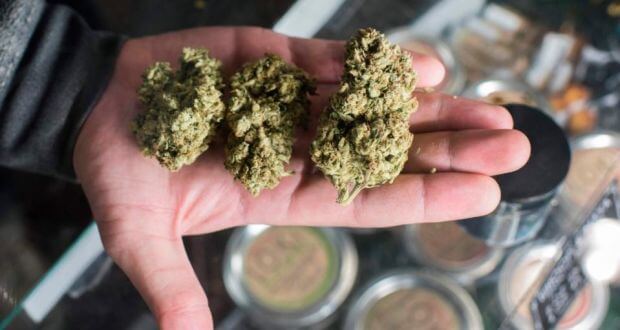
Opponents of the Williams Pipeline protested outside Gov. Andrew Cuomo’s midtown office Wednesday, pushing him to prevent the construction of the offshore natural gas pipe.
Williams, an Oklahoma-based energy company, submitted its third permit application to the state Department of Environmental Conservation in May, seeking a Water Quality Certification to move forward with construction of the pipeline. A public comment period on the application ended last month, prompting a coalition of environmental groups to hold a demonstration against the project.
“The comment period has ended, which means technically the DEC can make a decision any day now,” said Lee Ziesche, an organizer with the Sane Energy Project. “That’s why we thought it was very necessary to have a rally outside Gov. Cuomo’s office to remind him that New Yorkers really do not want this pipeline.”
Sane Energy Project is part of the Stop the Williams Pipeline coalition, which has held several demonstrations in recent years against the project.
Meanwhile, Williams argues that the pipeline is needed to meet the natural gas demand in New York City and Long Island.
Scroll down to learn more about the pipeline and the debate around its construction.
What is the Williams Pipeline?
The Williams Pipeline is a proposed $1 billion expansion of the company’s 10,000-mile-long Transco natural gas pipeline, which runs from south Texas to New York City.
Dubbed the Northeast Supply Enhancement project, the expansion would add a 23-mile offshore pipeline through New York Harbor from New Jersey to the Rockaways, a 3-mile pipe in Middlesex County, New Jersey, and a 10-mile pipe in Lancaster, Pennsylvania, to transport fracked gas from Pennsylvania to New York City and Long Island. The pipeline would be placed approximately 1 mile from Staten Island and 3.7 miles from the Rockaways.
It would supply the gas to customers through National Grid.
What are the arguments for and against the pipeline?
Williams and National Grid have said the expansion is needed to meet new natural gas demand, which the companies say will increase by 10% in the next decade. National Grid has been denying new gas hookups and threatened to continue a moratorium if the pipeline is not approved.
Williams has said the pipeline is needed to replace fuel sources with natural gas, the equivalent, it says, “of removing nearly 500,000 cars from the road for one year.”
However, the Stop the Williams Pipeline coalition, which includes multiple environmental groups, argues that the pipeline is unnecessary and harmful to the environment.
More natural gas is not needed to make up for the city’s ban on certain fuel oils, since few boilers in National Grid’s service areas still use the prohibited fuels, a report by a former New York DEC regional director says. In addition, the report disputes Williams and National Grid’s claim that demand for natural gas is increasing.
“Both the New York Independent System Operator and Long Island Power (Authority) predict electricity use decreases, not increases,” it says. “Williams’s touting of a 10% increase in need over the next decade is outdated.”
Among the environmental concerns, construction of the pipeline would drudge up toxins buried in the seafloor, polluting the New York Harbor, the coalition said.
The coalition is also opposed to the use of fracked gas and argues it goes against the state and the city’s commitments to use renewable energy instead of fossil fuels.
“They should deny the pipeline based on science,” Ziesche said.
The Federal Energy Regulatory Commission issued a Final Environmental Impact Statement in January that said the pipeline would result in some adverse environmental impacts, but added that those impacts “would be reduced to less-than-significant levels” with Williams’ proposed mitigation and additional measures recommended by the commission.
Didn’t the state Department of Environmental Conservation deny the permit application for the pipeline?
The DEC denied the Water Quality Certification needed for the New York portion of the Williams Pipeline twice, once in April 2018 and again in May 2019. But, the denials were “without prejudice,” which means Williams could apply again to address the reasons for the denial.
The DEC denied the application in April 2018 in part because the environmental review of the project by the Federal Energy Regulatory Commission was not complete at the time.
In May of this year, the department denied Williams’ second application because it said the construction of the offshore pipeline would not meet the state’s water quality standards.
“Specifically, construction of the proposed project would result in significant water quality impacts from the re-suspension of sediments and other contaminants, including mercury and copper,” a DEC statement said.
Williams applied for a third time days after the DEC announced its denial. The department has a year before it needs to give a response, but the Stop the Williams Pipeline Coalition does not expect it to take that long, Ziesche said.
Do New Yorkers support the pipeline?
After Williams submitted its application in 2018, the DEC received more than 14,000 public comments representing more than 45,000 individuals or organizations, and “well over 90 percent” did not want the DEC to issue the Water Quality Certification, the DEC said in a letter to Williams.
This summer, following the resubmission of the application, there were more than 25,000 comments submitted to the DEC against the pipeline, Ziesche said.
In addition, a poll commissioned by the Natural Resources Defense Council in July found that more than 50% of respondents oppose the pipeline after reading statements from both sides of the debate.































